Yesterday I went to a meeting of photographers where a freelance who works for one of the tabloids was showing his work, and was profoundly depressed. Not by the quality of his photography but by the kind of assumptions that underlie photography for the press, and not just the red-tops.
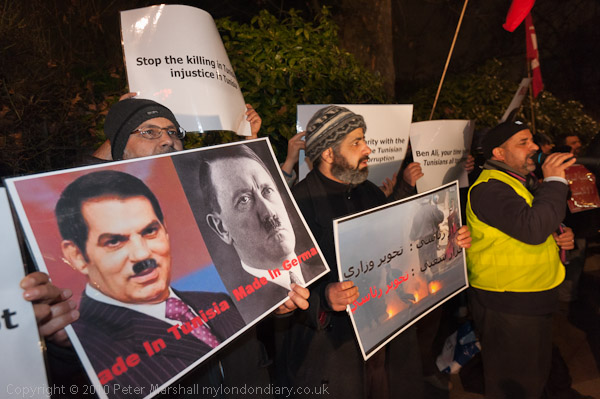
Opposite the Tunisian Embassy in London – 13 Jan 2011
It wasn’t just the attitudes of the speaker, but also some of the other photographers in the audience who at times seemed clearly to be justifying some of the work they did by simply denying responsibility for it – they were just following the orders of the editors.
Of course it is almost certainly right that if you want to make a good living from press photography you have to take on some fairly doubtful jobs from time to time, although there are some photographers who seem to have managed to avoid doing so.
Of course there was some questioning and discussion of the issues at the event, though I couldn’t bring myself to take part in it, partly because I’ve always chosen to remain on the periphery of the mass media. Teaching of course had its own moral problems, although I tried always to make it very clear to students that photography was only a directly vocational course for a tiny minority of those who studied it. There were quite a few students at the meeting, but most will find there is no – or not enough – work for them in photography after they graduate. I think we currently train more people every year than work in the whole “industry.”
On the way to the meeting I’d gone to photograph a demonstration opposite the Tunisian embassy against the killing of protesters on the streets. It wasn’t a huge event, but given the publicity that the events in Tunis and other cities in the country are currently getting I think it is genuinely news – rather more so than the minor misbehavour of minor “celebrities” that fills much of the press. But I think the only newspaper that had a photographer there was Al Jazera – and he, a friend of mine, had earlier in the day circulated the details to a number of photographers including myself. My report and pictures -including the one near the top of this post – appeared on Demotix around 11pm (and was selected for the front page), and on My London Diary the following day.
Demotix doesn’t make me a living, though recently it has been making me a little, selling my work on to papers etc, but I like it for the freedom it gives me to write my own articles and select my own pictures. Though in the rush to get work on line I don’t always make the correct choices. By today’s standards of course posting a story six hours after I took the pictures is incredibly slow, but it did at least give me a little time to review the images, both on the camera while travelling home and then larger on my computer screen. I also had time to process the raw files and make the necessary adjustments – exposure, contrast, a little burning and dodging and even a small amount of cropping to some. The result is all my own work and I take responsibility for it, mistakes (and I make quite a few) and all.
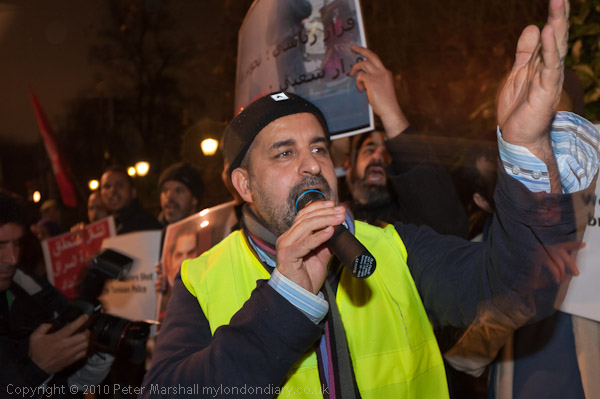
Opposite the Tunisian Embassy in London – 13 Jan 2011 – not originally selected
Looking at the work again this morning, I’ve found some decent images that I passed over last night – including those shown here, and decided to make a few more minor adjustments to some I did use, and selected roughly double the number of pictures to put onto My London Diary, and written most of this post before I had to rush out to photograph two more events.
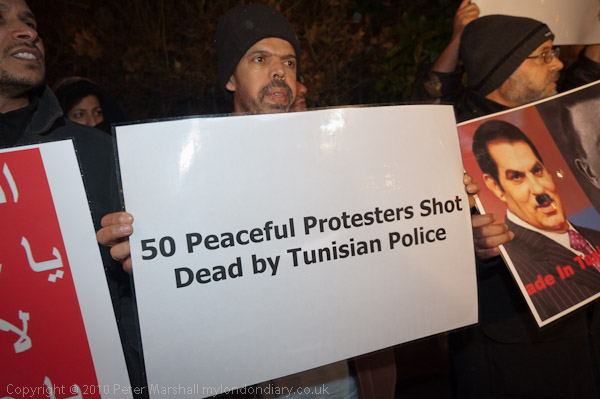
Opposite the Tunisian Embassy in London – 13 Jan 2011 – not originally selected
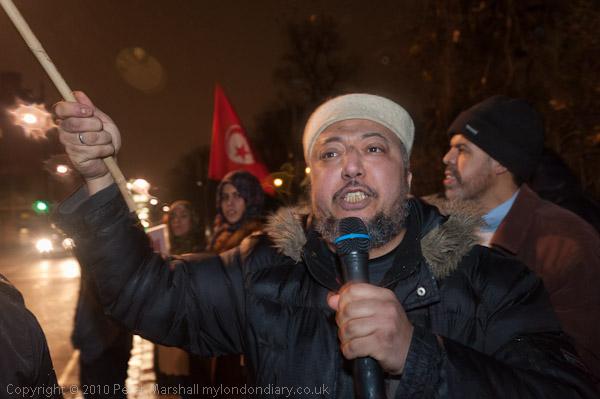
Opposite the Tunisian Embassy in London – 13 Jan 2011 – not originally selected
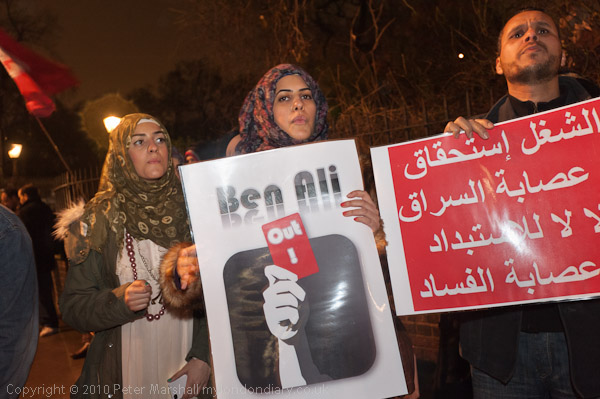
Opposite the Tunisian Embassy in London – 13 Jan 2011 – not originally selected
Perhaps these pictures don’t add a great deal to the story, and several are very similar to pictures that I did use. But one of the things that the web allows us to do is to use images to tell stories in depth, and it’s a possibility I’ve been exploiting on My London Diary for some years, but which I think the conventional media outlets have been slow to grasp – outside some multimedia presentations.